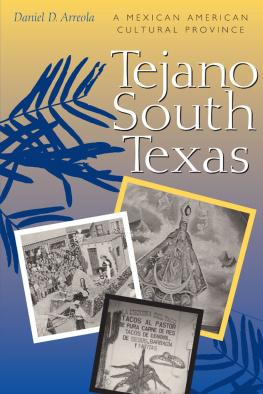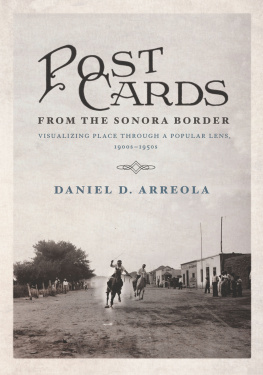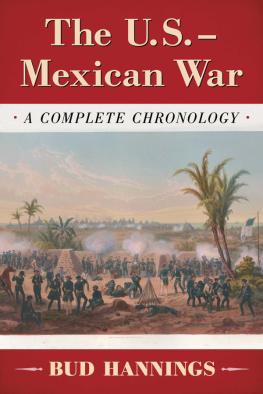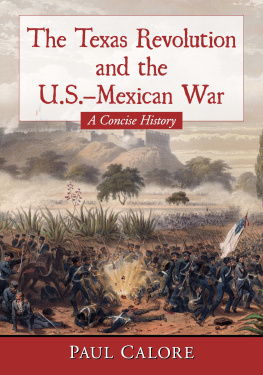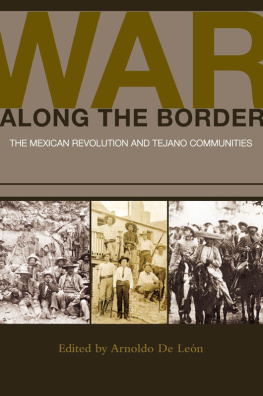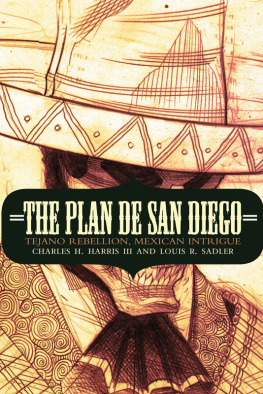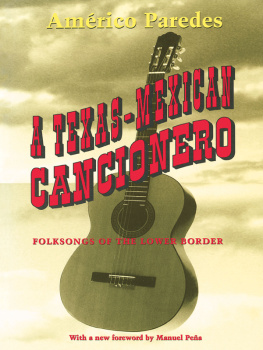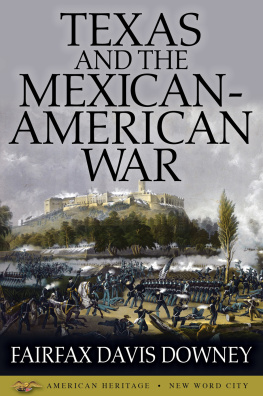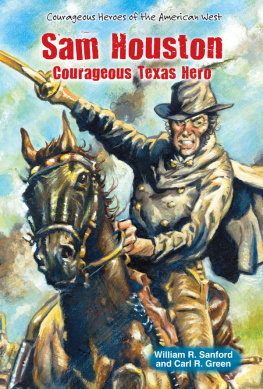Daniel D. Arreola - Tejano South Texas: A Mexican American Cultural Province
Here you can read online Daniel D. Arreola - Tejano South Texas: A Mexican American Cultural Province full text of the book (entire story) in english for free. Download pdf and epub, get meaning, cover and reviews about this ebook. year: 2002, publisher: University of Texas Press, genre: Romance novel. Description of the work, (preface) as well as reviews are available. Best literature library LitArk.com created for fans of good reading and offers a wide selection of genres:
Romance novel
Science fiction
Adventure
Detective
Science
History
Home and family
Prose
Art
Politics
Computer
Non-fiction
Religion
Business
Children
Humor
Choose a favorite category and find really read worthwhile books. Enjoy immersion in the world of imagination, feel the emotions of the characters or learn something new for yourself, make an fascinating discovery.
- Book:Tejano South Texas: A Mexican American Cultural Province
- Author:
- Publisher:University of Texas Press
- Genre:
- Year:2002
- Rating:3 / 5
- Favourites:Add to favourites
- Your mark:
- 60
- 1
- 2
- 3
- 4
- 5
Tejano South Texas: A Mexican American Cultural Province: summary, description and annotation
We offer to read an annotation, description, summary or preface (depends on what the author of the book "Tejano South Texas: A Mexican American Cultural Province" wrote himself). If you haven't found the necessary information about the book — write in the comments, we will try to find it.
How Texans of Mexican ancestry have established a cultural province in this Texas-Mexico borderland that is unlike any other Mexican American region.
Tejano South Texas: A Mexican American Cultural Province — read online for free the complete book (whole text) full work
Below is the text of the book, divided by pages. System saving the place of the last page read, allows you to conveniently read the book "Tejano South Texas: A Mexican American Cultural Province" online for free, without having to search again every time where you left off. Put a bookmark, and you can go to the page where you finished reading at any time.
Font size:
Interval:
Bookmark:
TEJANO SOUTH TEXAS
NUMBER FIVE Jack and Doris Smothers Series in Texas History, Life, and Culture
Daniel D. Arreola
Tejano South Texas
A MEXICAN AMERICAN CULTURAL PROVINCE

UNIVERSITY OF TEXAS PRESS
AUSTIN
Copyright 2002 by the University of Texas Press
All rights reserved
Printed in the United States of America
Second paperback printing, 2007
Requests for permission to reproduce material from this work should be sent to:
Permissions
University of Texas Press
P.O. Box 7819
Austin, TX 78713-7819
http://utpress.utexas.edu/index.php/rp-form
Library of Congress Cataloging-in-Publication Data
Arreola, Daniel D. (Daniel David), 1950
Tejano south Texas : a Mexican American cultural province / Daniel D. Arreola.1st ed.
p. cm.(Jack and Doris Smothers series in Texas history, life, and culture; no. 5)
Includes bibliographical references and index.
ISBN 978-0-292-70511-1 (pbk. : alk. paper)
1. Mexican AmericanTexas, SouthHistory. 2. Mexican AmericansTexas Southsocial life and customs. 3. Mexican AmericanTexas, SouthEthnic identity. 4. LandscapeSocial aspectsTexas, South. 5. Texas, SouthSocial life and customs. 6. Texas, SouthEthnic relations. 7. Human geographyTexas, South. 8. Human geographyMexican-American Border Region. 9. Mexican-American Border RegionSocial life and customs. 10. Mexican-American Border RegionEthnic relations. I. Title. II. Series.
F395.M5 A77 2002
976.4'0046872dc21 2001044294
ISBN 978-0-292-75718-9 (library e-book)
ISBN 978-0-292-79314-9 (individual e-book)
Dedicado a mis abuelos, hijos de Jalisco e inmigrantes a California.
Len Daz, 18881974
Juan Santana Arreola, 18991962
Contents
LIST OF FIGURES
LIST OF TABLES
Acknowledgments
Tejano South Texas was initiated in 1987 when I was on the faculty at Texas A&M University, College Station. My appointment in the Department of Geography required me to regularly teach a semester course on the geography of Texas. Through considerable reading and field explorations, I became convinced that South Texas was a unique subregion of the Mexican American borderland. I continued with the project upon my appointment to Arizona State University, Tempe, in 1990, although interruptions and new duties delayed completion of the research and writing until 2000.
Dozens of individuals and institutions have supported this project, although no major funding sources sponsored the research. Campbell W. Pennington, Head, Department of Geography at Texas A&M University, first invited me to Texas for a visiting appointment in 1980, and I returned there to a permanent post in 1983. I am thankful to those who supported my travels to South Texas to engage in archival and field research. Over the years, assistance was provided by Brian W. Blouet, Head, Department of Geography, Texas A&M University; Patricia Gober, Anthony Brazel, and Breandn hUallachin, Chairs, Department of Geography, Arizona State University; and Raymond Padilla and Felipe Castro, Directors, Hispanic Research Center, Arizona State University.
Many archives and museums provided essential materials for the project: Institute of Texan Cultures, University of Texas at San Antonio; Center for American Studies and Benson Latin American Collection, University of Texas at Austin; Lower Rio Grande Historical Collection, University of Texas, Pan American, Edinburg; Luciano Guajardo Historical Collection, Laredo Public Library, Laredo, Texas; Hidalgo County Historical Museum, Edinburg, Texas; La Paz Museum, San Ygnacio, Texas; South Texas Museum, Alice, Texas; Colonel Jos Antonio Zapata Museum, Zapata, Texas; and Ramon Hernandez Archives, San Antonio, Texas.
Research specialists who gave generously of their time and expertise included George R. Gause, Jr., Special Collections Librarian, University of Texas, Pan American; David J. Mycue, Curator of Archives and Collections, Hidalgo County Historical Museum; Luciano Guajardo, Director, Special Collections, Laredo Public Library; Joe Moreno, Jr., Special Collections Librarian, Luciano Guajardo Historical Collection, Laredo Public Library; Adn Benavides, Research Programs, Benson Latin American Collection, University of Texas at Austin; and Ramon Hernandez, Musical Archivist, San Antonio.
Individuals who agreed to be interviewed and who kindly permitted me to ask questions about their knowledge of South Texas include Alfredo E. Cardenas, Publisher, Duval County Picture, San Diego, Texas; Higinio Martnez Jr., City Administrator, City of Cotulla; Adrin Martnez, San Ygnacio; Poncho Hernandez Jr., Benavides; Roque Salas, Concepcin; Joel Uribe and Marcos Martnez, Laredo; Joe Bernal, San Antonio; and Abelardo H. Cant, Mary Louise T. Cant, Oliver Prez, and Rose Marie de la Pea, Los Angeles.
Professional colleagues who answered questions and provided materials include Joe S. Graham, Texas A&M University, Kingsville; Norma Cant, and Jerry Thompson, Texas A&M International University, Laredo; Mark Glazer, Head, Rio Grande Folklore Archive, University of Texas, Pan American; Jorge Gonzlez, Director, Nuevo Santander Museum, Laredo; Mario L. Sanchez, Texas Department of Transportation, Austin; Nina Nixon Mendez, Historic Preservation Officer, City of Laredo; Arnoldo De Len, San Angelo State University; and Robert C. Spillman, Bishop, Texas.
I thank the American Geographical Society publishers of Geographical Review, the Popular Press publishers of the Journal of Cultural Geography, and the National Council for Geographic Education publishers of Pathways in Geography Series for permission to reproduce portions of my previously published papers. The Institute of Texan Cultures, American Geographical Society, Benson Latin American Collection, Laredo Public Library, South Texas Museum, and the Texas Historical Commission, each permitted the reproduction of illustrations from their respective works and archives.
I am grateful to colleagues who read and responded kindly to draft chapters of the manuscript, especially James R. Curtis, William E. Doolittle, Richard L. Nostrand, Oscar J. Martnez, F. Arturo Rosales, Malcolm L. Comeaux, and Carolyn M. Daugherty. I owe a great debt to Barbara Trapido-Lurie, Research Associate in the Department of Geography at Arizona State University, for her unwavering commitment to drafting and supervising the cartography for the many maps and graphics that appear here from my sketches. I also acknowledge the Arizona Geographic Alliance, which generously supported a portion of the cartographic production costs. At the University of Texas Press, I thank William V. Bishel, sponsoring editor, Leslie Doyle Tingle, assistant managing editor, and Letitia Blalock, who edited the manuscript. In Texas, Bill Doolittle, Michael Yoder, and Terry Haverluk occasionally provided shelter and companionship during my visits, and for that hospitality and friendship I am especially thankful.
I express my appreciation to three extraordinary musical talents, Ry Cooder, John Hiatt, and Lowell George, whose inimitable lyrics and sounds livened mi nico camino when the airwaves dissolved across the expanse that is South Texas. I applaud the utter dependability of one 1983 Toyota Mojave pickup truck that transported me for the thousands of miles I crisscrossed South Texas.
Finally, I thank all South Texans for permitting me, an outsider, to engage their place and to share in their experience. I hope that through this work they might come to appreciate the value of the geographers point of view.
TEJANO SOUTH TEXAS
CHAPTER 1
Borderland Culture Region
The United States-Mexico border is the most extensive geographical area in which two of the principal cultures of this hemisphere actually meet. More than half of that border, approximately one thousand miles, is also the southern boundary of Texas.
Next pageFont size:
Interval:
Bookmark:
Similar books «Tejano South Texas: A Mexican American Cultural Province»
Look at similar books to Tejano South Texas: A Mexican American Cultural Province. We have selected literature similar in name and meaning in the hope of providing readers with more options to find new, interesting, not yet read works.
Discussion, reviews of the book Tejano South Texas: A Mexican American Cultural Province and just readers' own opinions. Leave your comments, write what you think about the work, its meaning or the main characters. Specify what exactly you liked and what you didn't like, and why you think so.

